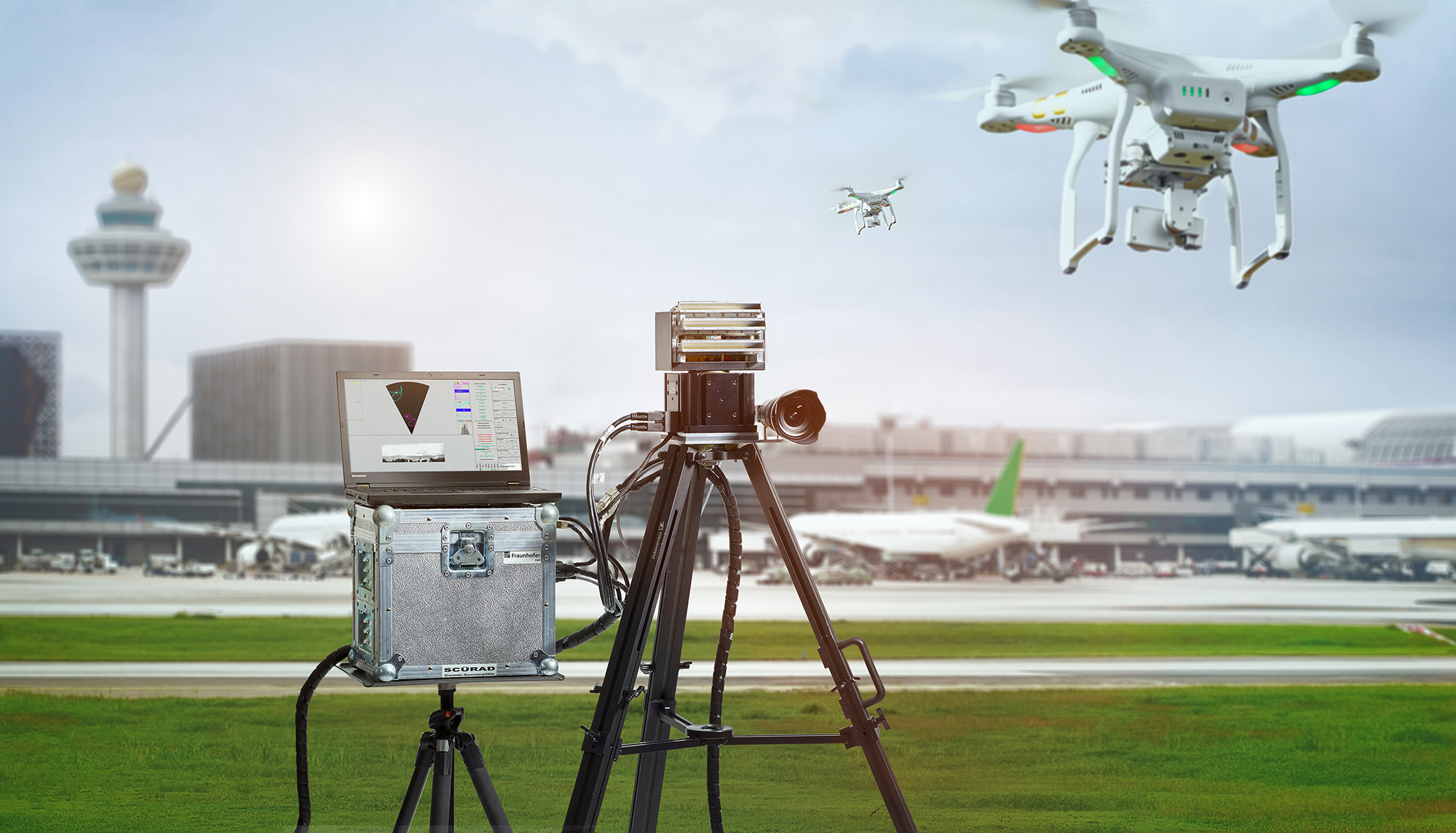Monitoring the surroundings on the ground and in the air
When drones cross paths with departing or landing aircraft, things can become dangerous. That is why the federal government wants to protect airports better. One possibility for this is a radar system that simultaneously monitors both the ground and the airspace, while classifying the objects and determining their altitude. The system can also be used to monitor military camps and checkpoints.
About a year ago, drones shut down London's Gatwick Airport, and in May 2019, operations at Frankfurt Airport also came to a halt due to a drone sighting. The reason: When private drones come close to an airport, they can significantly jeopardize air traffic. The federal government has now made it its goal to protect airports better in the future.
Determining the Altitude of Moving and Static Objects
This could be possible using a new radar device from Fraunhofer FHR. The device is not only capable of simultaneously monitoring the ground and the airspace, but also of classifying the detected objects – for example distinguishing between a drone and a bird – and determining their position and altitude. The radar device is located on the ground and rotates around itself once every 625 milliseconds, therefore measuring in all directions. In addition, a transmitting antenna sends out radar waves with a medium frequency of 94 GHz. Two receiving antennas that are slightly tilted toward each other allow for the determination of an object's height above ground. When the drone is flying further up above, the upper receiving antenna will receive a greater signal than the one below, and the other way around. This is called an amplitude monopulse. Another advantage of the system: In contrast to other systems, it is able to detect both static as well as moving objects. Thus, it also sees the drone when it is »standing still« in the air. Since the medium frequency is 94 GHz, it is highly sensitive and capable of detecting even small structures very well.
Bird or Drone? Classifying Objects
Another special feature: The system distinguishes between different objects – for example between a drone and a bird. This is made possible by the system analyzing the signal's speed components. While a bird only moves with a few different speeds – the bird's flying speed, the fluttering of the wings, perhaps a movement of the head – the rotors of a drone move at entirely different speed. Every object has its very own speed signature through which it can be classified. This ensures protection on the ground as well, for instance in a military camp. Is that a person moving through a restricted area or only a stray fox? The radar has already been set up as an experimental system and is currently being used for research purposes.
